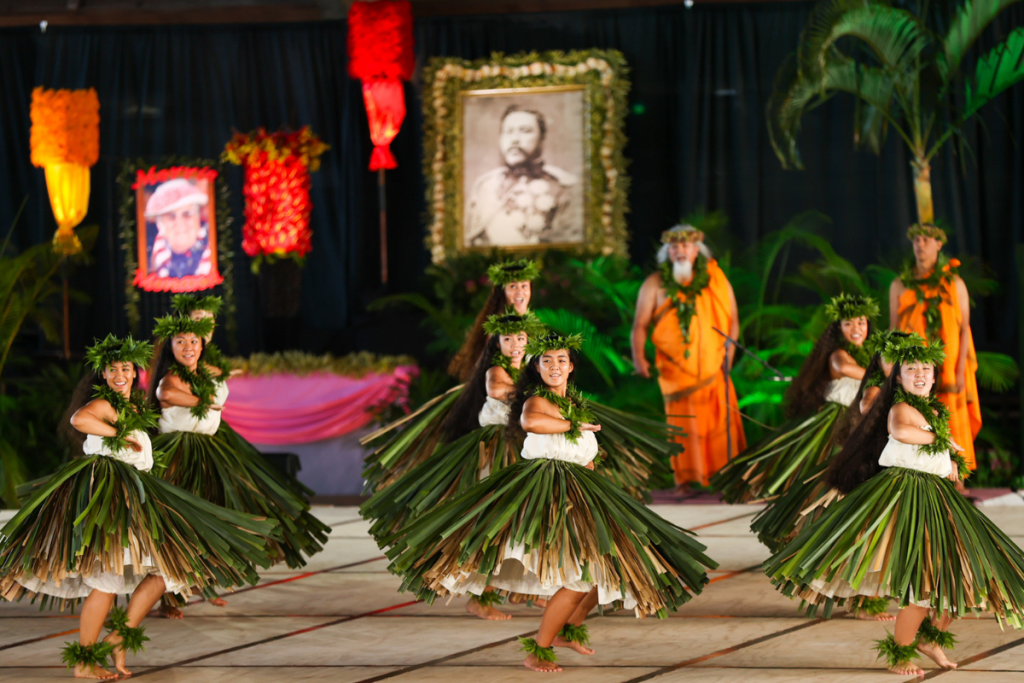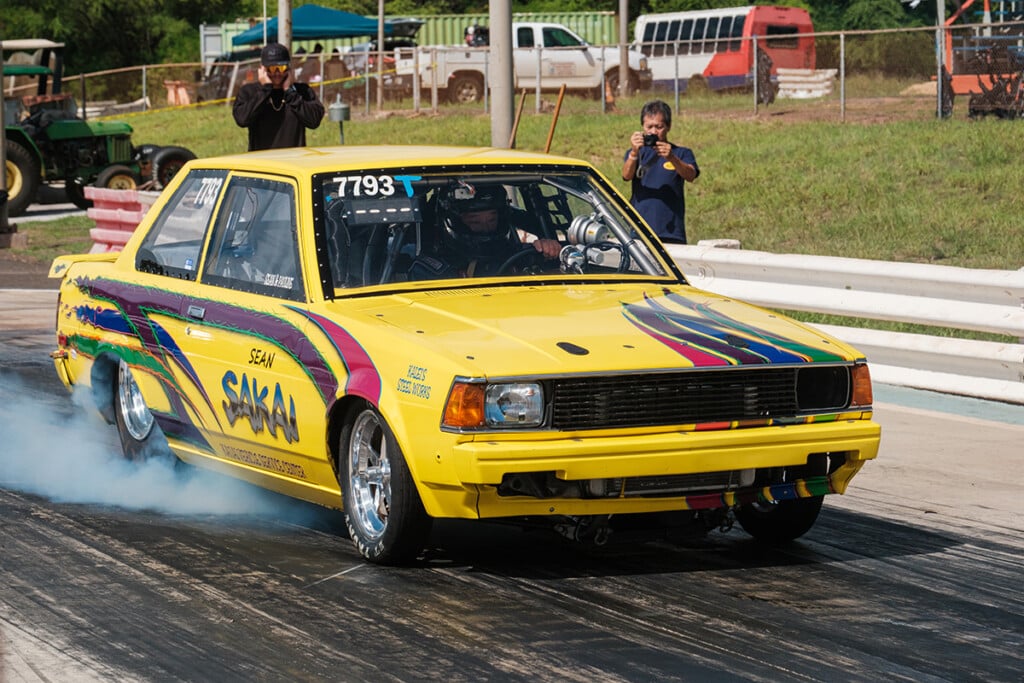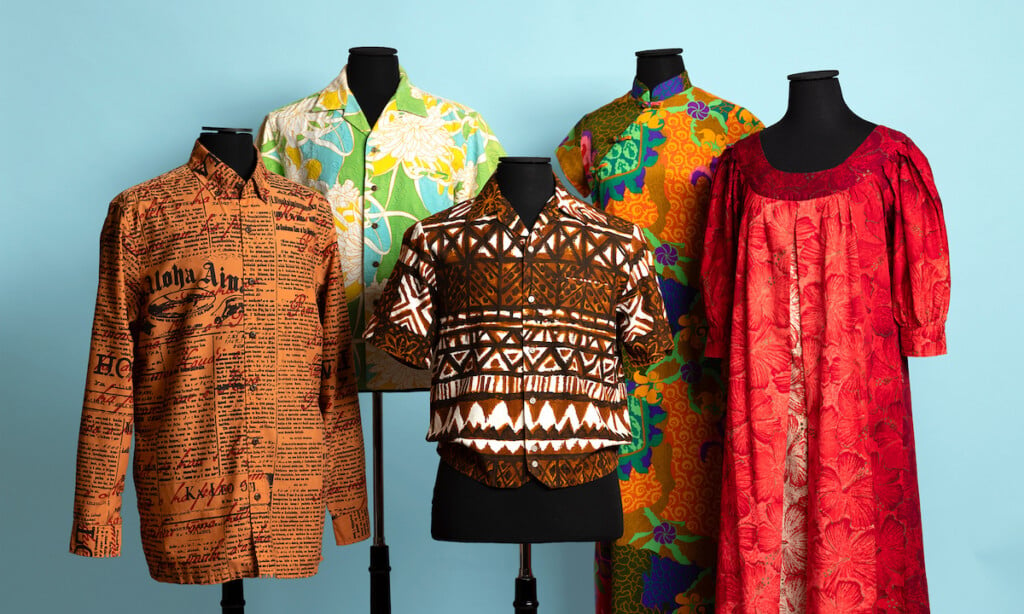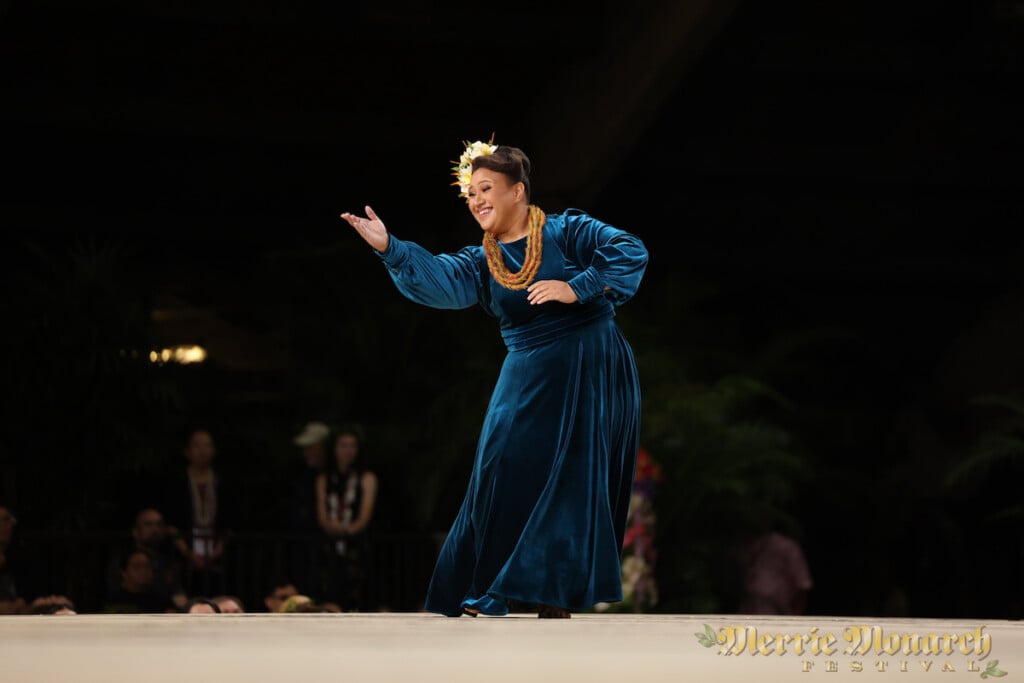A Beginner’s Glossary to the Merrie Monarch Festival
Do you know the meaning of hoʻolauleʻa? Here’s a helpful list of common terms and definitions you may hear while watching the Merrie Monarch Festival this week.

The Merrie Monarch Festival has officially kicked off. The festival is a week-long celebration of hula and Hawaiian culture. For anyone unsure of terms and people referenced throughout the festival, this is your elementary guide to what you may hear and see.
ʻAuana – Modern style of hula we see today.
Haumāna – Student.
Hiʻiaka – Goddess of hula and the goddess Pele’s favorite sister.
Hōʻike Performances – Exhibition performances. This year, the popular Hōʻike event will take place on Wednesday, April 20.
Hoʻolauleʻa – Celebration.
Hula – Traditional Hawaiian dance form accompanied by an oli (chant) or mele (song). Hula was also method for ancient Hawaiians to pass down stories to younger generations.
Hula Hālau – Hula troupes.
ʻIliʻili – Smooth stones used in hula.
Ipu – Percussion instrument consisting of a single gourd or made up of two large gourds of unequal sizes that are joined together. Often the instrument is hit with a hand or tapped on the ground to create a beat.
Kālaʻau – Identical wooden sticks that when hit produce a dry, clicking sound.
King David Kalākaua – Hawaiʻi’s last reigning king. His incredible legacy includes the restoration of hula and revival of traditional Hawaiian arts, earning the nickname “The Merrie Monarch.” The festival honors the influential king.
Edith Kanakaʻole – The Hawaiian cultural icon was an acclaimed kumu hula (hula teacher), hula dancer, composer and chanter. She was also an instrumental figure in leading the Hawaiian renaissance of the 1970s. The Merrie Monarch Festival is held at the Edith Kanakaʻole Stadium, which commemorates her legacy.
Kahiko – A traditional hula style often accompanied with traditional instruments.
Kāholo – Translating to nimble and swift, the hula step is common in modern dances. The term “turning kaholo” is often used.
King Kamehameha I – Also known as Kamehameha the Great, united all the major Hawaiian Islands and was the first ruler of the Kingdom of Hawaiʻi.
Kāne – Men.
Kapa – Also called tapa, the material is made from pounding the bark of wauke plants, an arduous process. The material is then fashioned into fabrics, clothing and quilts.
Kapu – Sacred, holy or consecrated.
Luana Kawelu – Current president of the festival. Kawelu’s mother Dottie Thompson helped establish the first iteration of the Merrie Monarch Festival.
Kepakepa – Conversational, fast rhythmic chants or recitations with every syllable clearly pronounced.
Kuleana – Responsibility.
Kumu Hula – Hula teachers.
Laka – Also known as the goddess of hula.
Lei – Garland of flowers, leaves, shells, ivory or feathers, worn around the neck or head. Often given as a gift of affection.
Malo – Male’s loincloth.
Mana – Divine power.
Mele – Song, anthem or chant of any kind.
Nāmaka – Goddess of the sea and Pele’s sister.
ʻŌlelo Hawaiʻi – Hawaiian language.
ʻOli – Chant that is not danced to.
Pahu – A traditional Hawaiian drum used to provide rhythm. Carved from wood, the drum is tall and narrow.
Palapalai – Indigenous fern that is significant in Hawaiian culture as one of the plants kapu to Laka. Many songs and chants refer to the fern for its beauty and cultural importance.
Paʻū – Dance skirt.
Pele – The goddess of volcanoes and fire.
Pūʻili – Pieces of dried bamboo cut into strips to create a distinctive rattling sound when hit. Used in pairs and dancers tap them against each other.
ʻUlīʻulī – Gourds filled with shells, seeds, or pebbles that rattle. The instrument is adorned with colorful feathers.
Wāhine – Women.
Terms and definitions are in reference to the Nā Puke Wehewehe ʻŌlelo Hawaiʻi.


